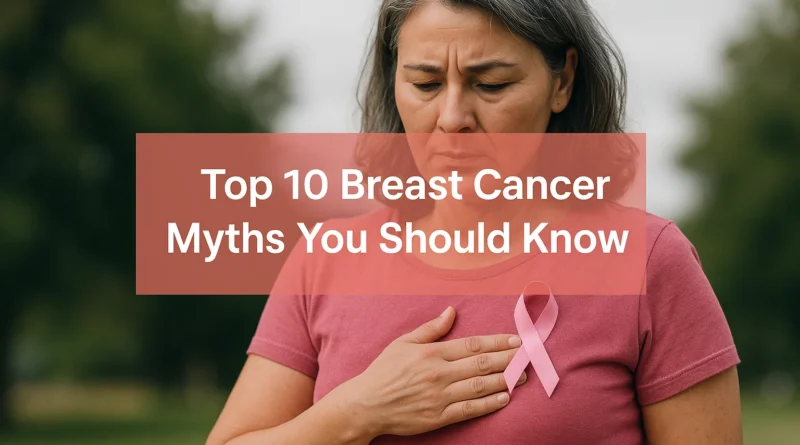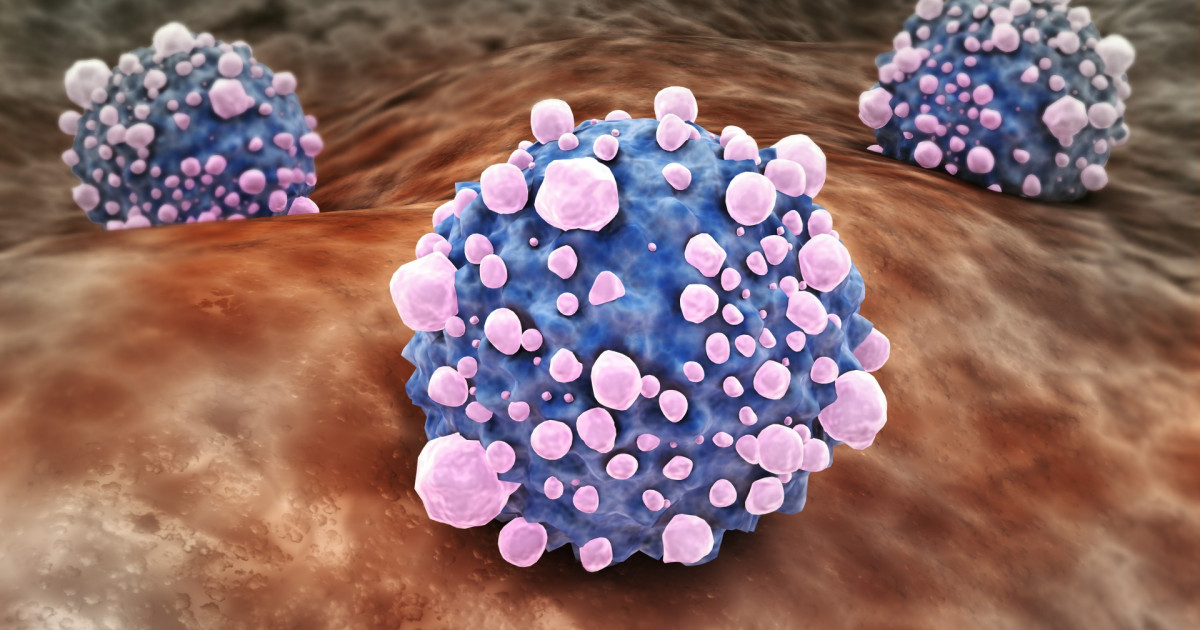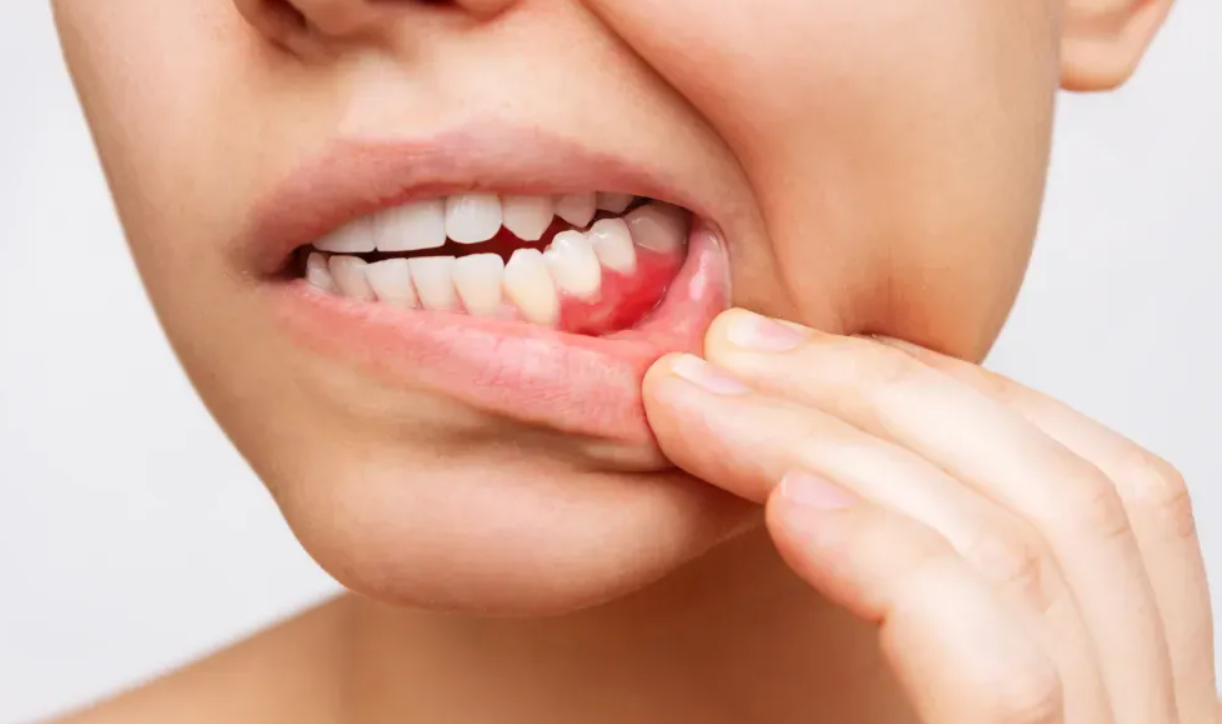Top 10 myths about Breast Cancer you must know
Breast cancer has become one of the most common cancers worldwide. Unfortunately, false information and misconceptions often spread faster than the facts, causing confusion and making people less aware of the disease, which can make diagnosis more difficult. Let’s debunk the myths of breast cancer and look at the relevant facts.
Myths related to Breast Cancer:
Myth 1: Breast cancer is not genetic
No, about 5-10% of the cancers are hereditary, which can run through a family and pass from one generation to the next. Mutations in the BRCA1 and BRCA2 genes are the main cause of inherited breast cancer, which requires genetic screening and counseling if the risk is higher. Consult your oncologist to know about blood tests for breast cancer treatment.
Myth 2: Maintaining a Healthy Lifestyle prevents Breast Cancer
Having good health and weight can lower the risk, but cannot entirely prevent you from breast cancer, as it can happen to anyone regardless of fitness and health. It is important to perform self-breast exams and get regular screening as you age (or if you have a family history of cancer) to keep a check on the condition for better analysis.
Myth 3: A Lump always means breast cancer
Not all lumps are cancerous, as some may resemble cysts or fibroadenomas; it’s important to check for breast cancer symptoms, such as swelling or pain around the nipple, do a self-exam, or visit a doctor for regular screening, which is quite helpful in early detection.
Myth 4: Breast cancer risk increases after the 50s.
With age, the risk of getting breast cancer increases, but it does not mean it cannot affect women at a younger age; as per the study from Apollo Hospitals analysis in 2023, it suggests ~25% of cases are below 40, and the Breast Cancer India study revealed that nearly 47% of the breast cancer cases are below 50 years old. If you have a family history, the chances are a bit higher. Early diagnosis enables early detection and control of the condition.
Myth 5: Too much sugar can cause Breast cancer
Cancer cells indeed feed more on sugar as an energy source when compared to normal cells, but there is no such evidence claiming that too much sugar intake can lead to breast cancer. Excessive sugar usually leads to weight gain and obesity, and it has shown some indirect relation to some types of cancer.
Myth 6: Mastectomy is always required for breast cancer treatment
Not always, in the early stages of breast cancer. Lumpectomy (removal of the cancerous tumor around breast tissue), along with radiation therapy, has shown a higher survival rate than mastectomy (removal of one or both breasts). With the introduction of advanced techniques like immunotherapy, breast cancer treatment has become more personalized and surgery-free.
Myth 7: A Mammogram confirms breast cancer
A mammogram is one of the most recommended diagnostic tools by radiologists for breast cancer diagnosis, but it does not guarantee or confirm breast cancer. Sometimes, false results can appear due to the dense glandular and connective breast tissue, especially in young women. So it is recommended to have regular breast exams to check for early diagnosis and the risk of breast cancer.
Myth 8. Underarm Deodorant can cause breast cancer
So many rumors have spread showing a connection between perfumes and breast cancer, but till now, no study has claimed this. Some theories have arisen saying that the aluminum components present are absorbed by lymph nodes and can reach breast tissue; another theory says that the antiperspirant reduces the underarm sweating and prevents the release of toxic substances that can increase risk. However, some studies show the high concentration of aluminum in breast tissue in women who use aluminum products.
Myth 9. Complete Treatment Guarantees Full Recovery
This is not entirely true; it is important to note that the women recovering or near the end of their treatment need to be regularly examined to check for cancer relapse. Through regular checkups, the patient can analyze their recovery. If a patient is undergoing chemotherapy or radiation therapy, they may experience long-term side effects such as fatigue, anxiety, tingling, and numbness in their hands and feet, as well as emotional and mental side effects that require care and support from their family and caregivers to recover quickly and improve their quality of life.
Myth 10. Men cannot get breast cancer
The incidence rate is quite low, and limited data are available as of now to study breast cancer in men. Studies suggest that nearly 1% of men can have this cancer. Most common invasive ductal carcinomas suggest that breast cancer affects men in their 60s; It is present as a painless lump. The cancer is often a hormone-receptor-positive cancer (estrogen receptor positive) that can be best treated with hormone therapy if diagnosed early.
Breast Cancer Stats: USA and Europe
| Feature | USA | Europe (Western & Northern) | Europe (Eastern & Southern) |
| Incidence (ASIR) | ~120–130 per 100k women | ~75–80 per 100k | ~55–65 per 100k |
| Mortality (ASMR) | ~15-18 per 100k | ~12-15 per 100k | ~18-20 per 100k |
| Age at Diagnosis | Peak at 55–64 yrs | Peak at 55–65 yrs | Peak at ~50–60 yrs |
| Stage at Diagnosis | Approximately 65-70% of cases are in their early stages (I/II). | The majority of cases were detected early. | Higher proportion of late-stage cases |
| 5-Year Survival | ~92% overall | 85–90% | 70–75% |
| Screening Coverage | Widespread mammography, often twice per year for women 40+ | Strong national, organized screening programs | Uneven, lower coverage in many countries |
| Trends | Incidence is stable/slightly rising; mortality is significantly declining. | Despite the high incidence, mortality rates are steadily improving. | Lower incidence, but mortality reduction is slow. |
Key Notes
- USA: Leads in precision medicine, targeted therapies, and survival outcomes. High incidence is associated with lifestyle factors.
- Western and Northern Europe: The Region shows organized screening and public health initiatives. High incidence reflects early detection.
- Eastern and Southern Europe: Struggles with access to care and late diagnosis, leading to a higher mortality rate despite a lower incidence.
Breast Cancer in Asia and MENA (Middle East and North Africa region) Statistics
| Feature | Asia (Overall) | Middle East & North Africa (MENA) |
| Incidence (ASIR) | ~34/100k women | 30–60/100k (country variation) |
| Mortality (ASMR) | ~10.5/100k | 7–20+/100k |
| Age at Diagnosis | Younger: peak 45–49 yrs | Younger: median <50 yrs (Saudi ~45, Jordan ~44) |
| Stage at Diagnosis | Only ~30% early stage; many late-stage | The majority present late-stage |
| 5-Year Survival | ~60-70% in high-income Asia; 50% or less in South Asia. | ~50–60% in the Gulf; far lower in low-resource/conflict regions |
| Subtype Patterns | More HER2+ and triple-negative cases vs West | Aggressive subtypes are relatively common |
| Screening Coverage | Patchy; urban rich get mammograms, rural poor often none | Screening is very limited; cultural stigma is a barrier |
| Trends | Fastest growth globally: projected ~1.4 million new cases in Asia by 2050 | Rising rapidly, the highest growth rate of all global regions. |
Key Notes:
- Breast cancer is commonly diagnosed in women in Asia, the Middle East, and North Africa at a younger age, usually in their mid-40s.
- Late-stage diagnosis reduces treatment options and survival chances.
- The high mortality rate in comparison to incidence is the result of delayed diagnosis and healthcare access gaps.
- Aggressive subtypes of breast cancer, such as HER2-positive and triple-negative, are more common than in Western countries.
- Asia is expected to have ~1.4 million new cases due to limited screening and rapid growth by 2050.
Conclusion
This article discusses fact-based information while effectively addressing common myths about breast cancer. By clarifying myths, it enables people to make informed choices about their health, which highlights the benefits of early screenings, genetic awareness, and the complexity and uniqueness of breast cancer risk and treatment.
References:
- https://www.cancer.org/cancer/breast-cancer/risk-and-prevention/breast-cancer-risk-factors-you-cannot-change.html.
- https://doi.org/10.1016/j.ebiom.2017.06.005.
- https://www.ncbi.nlm.nih.gov/pmc/articles/PMC4703949/.
- https://www.cancer.gov/types/breast/mammograms-fact-sheet.
- https://www.nejm.org/doi/full/10.1056/NEJMoa1701830.
- https://www.cancer.org/content/dam/cancer-org/research/cancer-facts-and-statistics/breast-cancer-facts-and-figures/breast -cancer-facts-and-figures-2017-2018.pdf (PDF).
- https://www.cancer.org/cancer/breast-cancer-in-men/about/key-statistics.html.
Breast Cancer Statistics
- https://www.cancer.org/research/cancer-facts-statistics.html
- https://seer.cancer.gov/
- https://gco.iarc.fr/today/
- https://ecis.jrc.ec.europa.eu/
- https://csg.lshtm.ac.uk/research/themes/concord-programme
- https://pmc.ncbi.nlm.nih.gov/articles/PMC9454998/
- https://www.kjronline.org/pdf/10.3348/kjr.2025.0338




